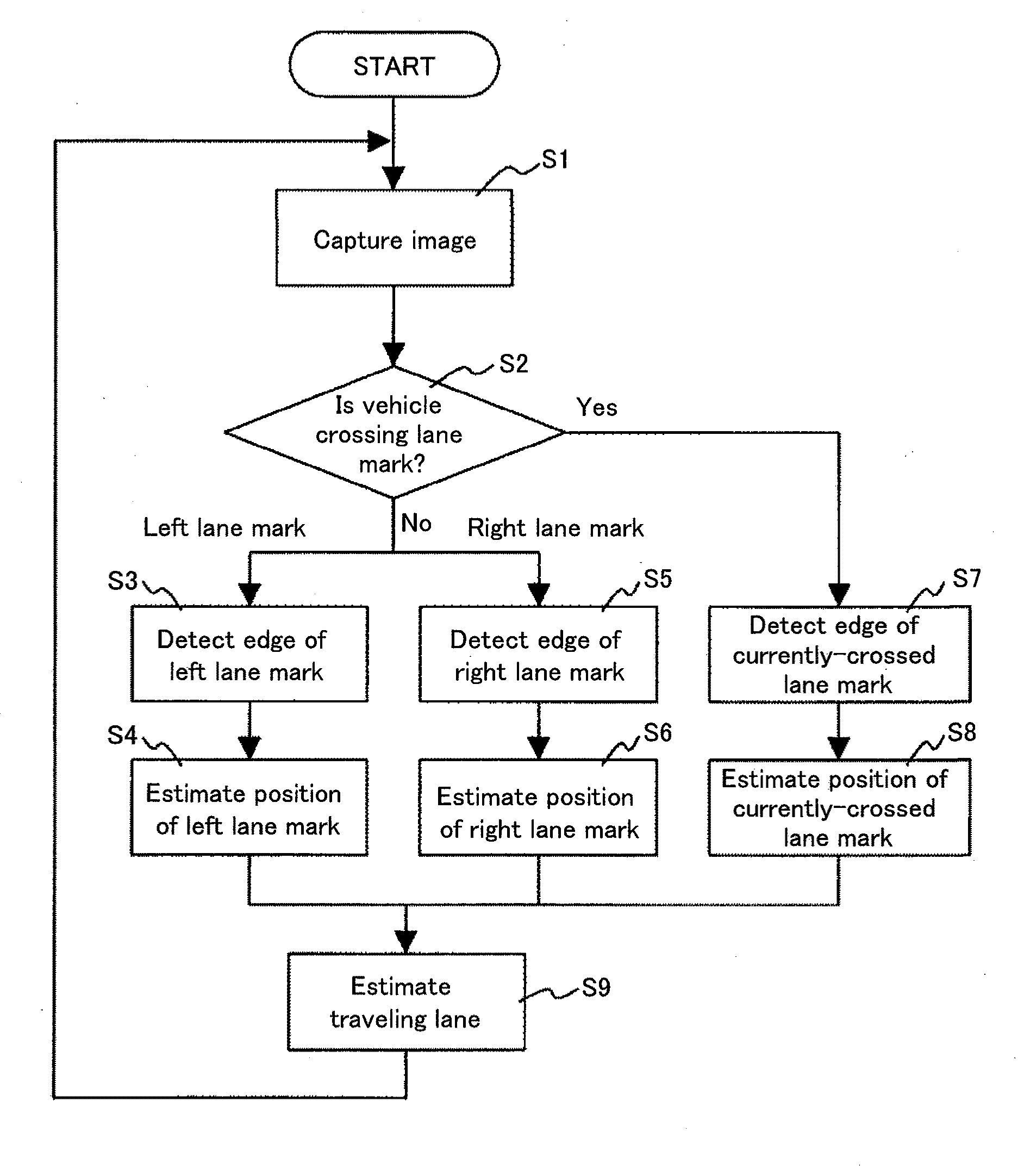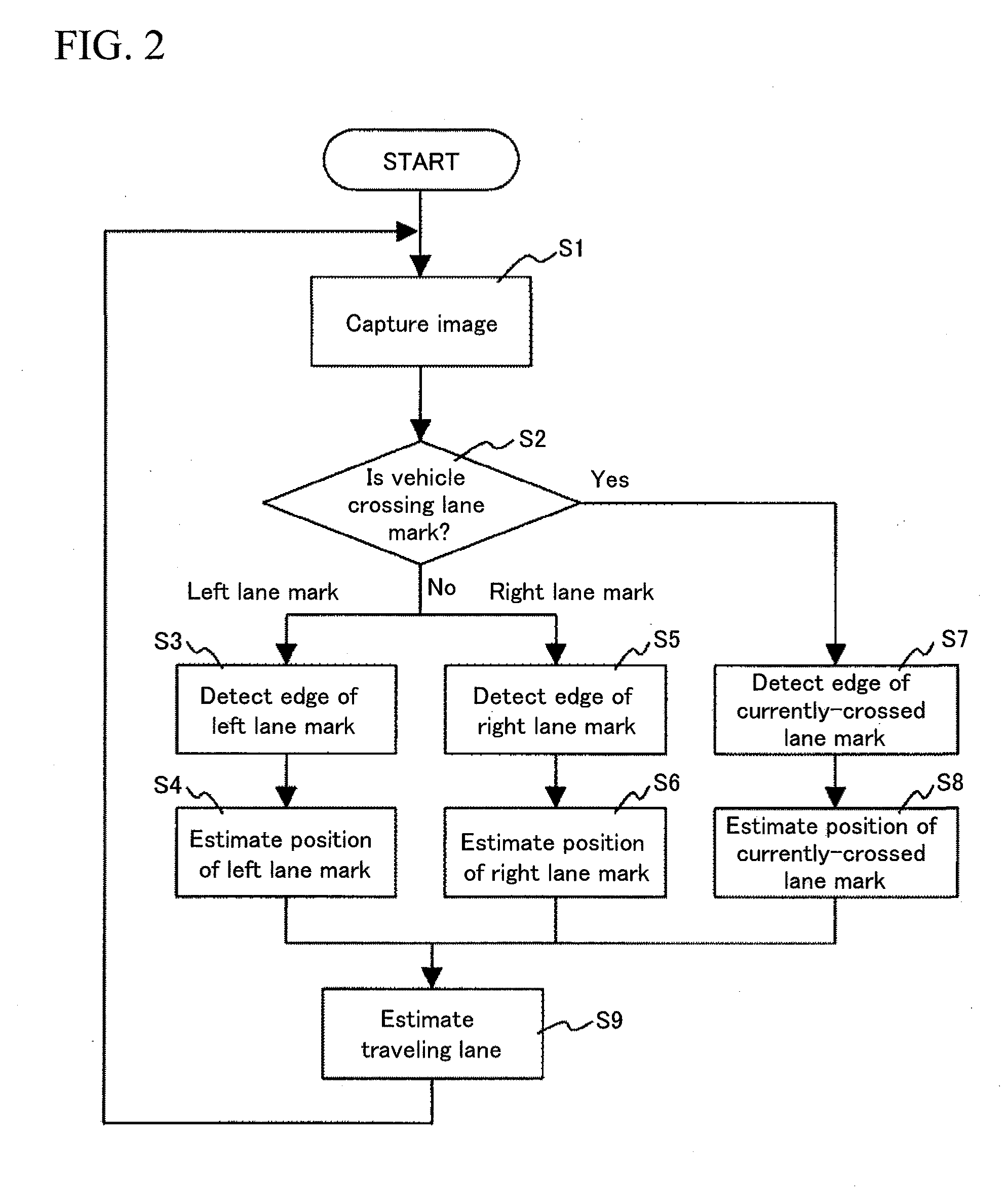Traveling Lane Detector
a detector and lane technology, applied in the field of traveling lane detectors, can solve the problems of inability to extract the edge parts of both inability to detect the edge parts of the lane mark, and inability to satisfy the extraction of the edge parts of the left and right lane marks, so as to speed up image processing and reduce erroneous detection
- Summary
- Abstract
- Description
- Claims
- Application Information
AI Technical Summary
Benefits of technology
Problems solved by technology
Method used
Image
Examples
Embodiment Construction
[0026]FIG. 1 is a functional block diagram showing an example of a configuration of a traveling lane detector according to an embodiment of the present invention. The traveling lane according to this embodiment includes two main units, an imaging unit 401 and an image processor 402. The imaging unit 401 includes a charge-coupled device image sensor (referred to as a CCD, below) 403 and an AD converter 404. The image processor 402 includes a video input section 405, a flash ROM (FROM) (non-volatile memory) 406, a central processing unit (CPU) 407, a random access memory (RAM) 408 and a control area network (CAN) 409. The imaging unit 401 is mounted on a vehicle in such a position that the CCD 403 can capture a road surface in front of or behind the vehicle so as to take an image of lane marks. A single or multiple windows are defined in a taken image as described below, thereby performing lane mark detection processing using image processing.
[0027]FIG. 2 is a flowchart of processing ...
PUM
 Login to View More
Login to View More Abstract
Description
Claims
Application Information
 Login to View More
Login to View More - R&D
- Intellectual Property
- Life Sciences
- Materials
- Tech Scout
- Unparalleled Data Quality
- Higher Quality Content
- 60% Fewer Hallucinations
Browse by: Latest US Patents, China's latest patents, Technical Efficacy Thesaurus, Application Domain, Technology Topic, Popular Technical Reports.
© 2025 PatSnap. All rights reserved.Legal|Privacy policy|Modern Slavery Act Transparency Statement|Sitemap|About US| Contact US: help@patsnap.com



